As we prepare to celebrate the birthday of Jesus the son of God commonly known as “Christmas” here are some great National Game Parks you can spend your holiday.
The Christmas season or the festive season is an annually recurring period recognized in many Western and other countries that is generally considered to run from late November to early January.
In Uganda, Christmas, or “Sekukkulu”, is a national public holiday and is much celebrated by the people.
Also Read: Full List : HiPipo Music Awards Winners 2022
Best 8 Ugandan National Parks below;
1. Kibale National Park
Kibale National Park is a national park in western Uganda, protecting the moist evergreen rainforest. It is 766 square kilometres in size and ranges between 1,100 metres and 1,600 metres in elevation.
Despite encompassing primarily moist evergreen forest, it contains a diverse array of landscapes. The Park is located in Kabarole District in Western Uganda.
Kabarole has a big population of the Batoro tribe with their King Omugabe Oyo Nyimba Kabamba Iguru.
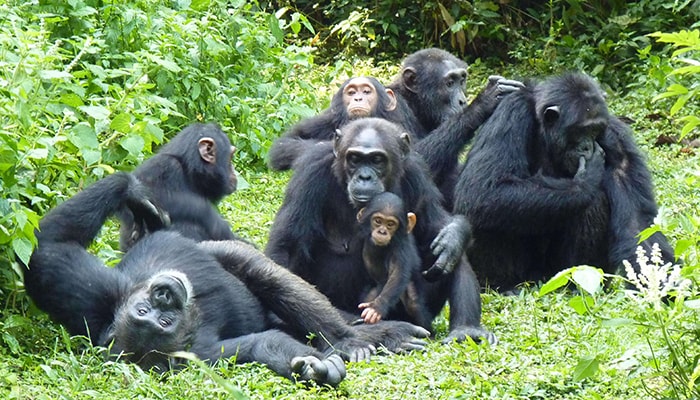
This national park has contribute widely in Uganda’s tourism industry because it harbors some endangered species that catch People’s eye (Chimpanzees)
Uganda has a total of about 4950 chimpanzees and Kibale National park holds about 1500 chimpanzees
For the best chimpanzee trekking in Uganda, kibale National park guarantees the best views of these endangered primates.
Kibale National Park is home to about 70 forest wildlife including the buffaloes, forest Elephants, the antelope and 375 bird species.
2. Bwindi Impenetrable National Park
The Bwindi Impenetrable Forest is a large primeval forest located in south-western Uganda in the Kanungu District. The Bwindi forest is on the edge of the Albertine Rift, the western branch of the East African Rift, at elevations ranging from 1,160 to 2,607 metres.
Bwindi Impenetrable National Park hosts almost half of the world’s mountain gorilla population, the property represents a conservation frontline as an isolated forest of outstanding biological richness surrounded by an agricultural landscape supporting one of the highest rural population densities in tropical Africa.
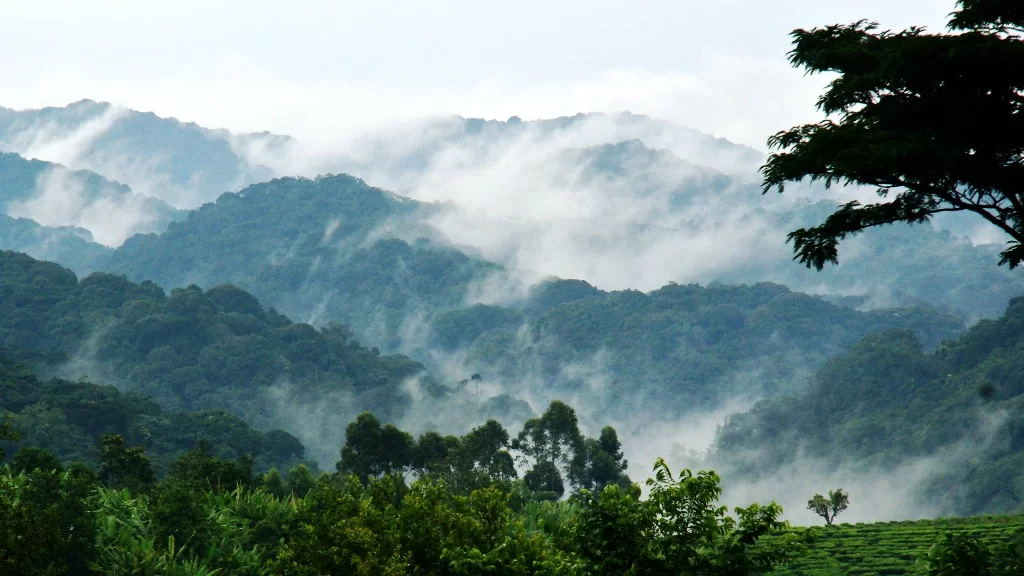
For the best gorilla trekking adventure in Uganda, Bwindi Impenetrable National Park is the answer.
3. Murchison Falls National Park
Murchison Falls National Park (MFNP) is in north-western Uganda, spreading inland from the shores of Lake Albert, around the Victoria Nile, up to the Karuma Falls.
Murchison Falls National Park lies at the northern end of the Albertine Rift Valley, where the sweeping Bunyoro escarpment tumbles into vast, palm-dotted savanna. First gazetted as a game reserve in 1926, it is Uganda’s largest and oldest conservation area.
The park is bisected by the Victoria Nile, which plunges 45m over the remnant rift valley wall, creating the dramatic Murchison Falls, the centerpiece of the park and the final event in an 80km stretch of rapids.

Murchison Falls is notably blessed with over 144 mammals,556 bird species,51 reptiles, and 51 Amphibians. With a great number of African elephants, Murchison falls is impressive all year round.
The aerial survey noted over 900 individuals and 1,330 and is at an increase. Historically Giraffes exclusively inhabit the northern sector of the park. Buffalo populations have spiked to over 10,000 while Uganda kobs have leaped to more than 35,000.
4. Queen Elizabeth National Park
Queen Elizabeth National Park is Uganda’s most popular savannah reserve and has the widest variety of wildlife of any Ugandan park. The variety of habitats includes grassland savannah, forests, wetlands and lakes.
It is located in southwestern Uganda and lies astride the Equator with monuments on both sides of the road making latitude 00. It is in the Albertine region along with Kyambura and Kigezi wildlife reserve, which brings together the most diverse ecosystem in Africa.
The park is home to over 95 mammal species, which are the main attraction of the visitors to the park. It has four of the ‘Big Five’ namely Elephant, Leopard, Lion and Buffalo. It is home to thousands of hippos that populate the water shores of Kazinga Channel, which connects Lake George to Lake Edward – known to have the largest herd of hippos.
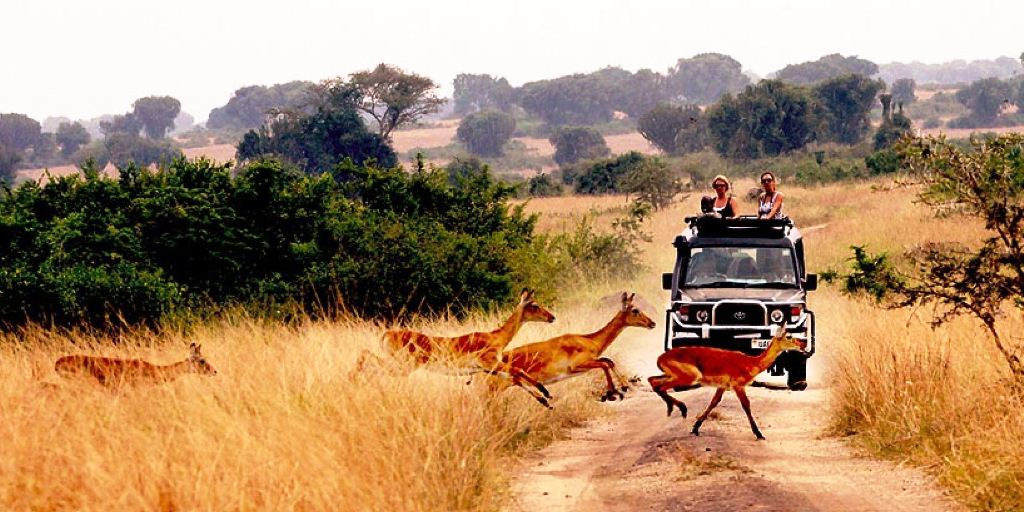
The park is an open Savannah spread with acacia and euphorbia trees that provide a habitat for leopards, elephants, lions, Uganda kobs, Topi, hyenas, and big herds of buffaloes, large families of banded mongoose, warthogs, bushbucks and waterbucks.
Chimpanzees and other primates are found in the adjacent Kyambura gorge and ‘underground forest’. Look for the black-and-white colobus monkeys, red-tailed monkeys, olive baboons etc.
Queen Elizabeth national park is a birdwatchers haven with over 600 bird species and is an important Birding Area (IBA) according to Birding International. It has the highest number of birds found in any protected area in East Africa.
5. Mount Elgon National Park
Situated on the Kenyan-Ugandan border, Mount Elgon National Park is named after Mount Elgon, an extinct shield volcano which first erupted more than 24 million years ago.
Mount Elgon has the largest surface area of any extinct volcano in the world, and its 4,321m peak is the eighth highest in Africa.
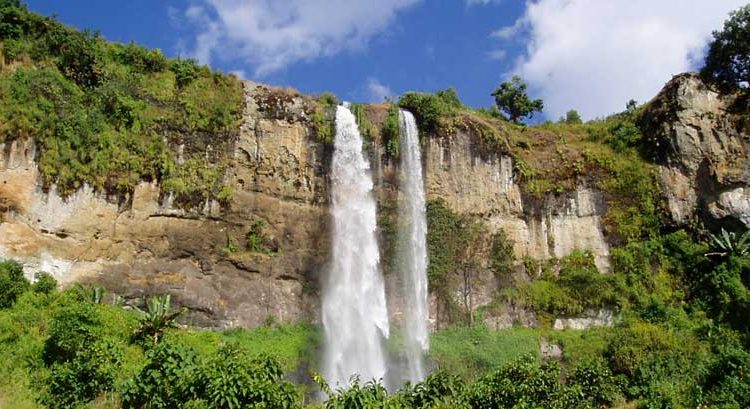
Of the park’s 1,279km² surface area, the Ugandan section covers 1,110km² whilst the smaller Kenyan section covers 169km².
Mount Elgon National Park is home to a plethora of wildlife. The lower slopes of Mount Elgon are inhabited by elephants, buffalo, and a variety of small antelope.
The dense montane forest contains primates such as the black-and-white colobus monkey and the blue monkey.
The park is also home to over 300 species of bird, including the Tacazze sunbird and the lammergeier.
Mount Elgon National Park contains over 300 species of bird and it has been recognised as an Important Bird Area (IBA).
6. Lake Mburo National Park
Lake Mburo National Park is a very special place; every part of it is alive with variety, interest and colour. It contains an extensive area of wetland and also harbours several species of mammals and birds found nowhere else in Uganda. Its sculptured landscape, with rolling hills and idyllic lake shores has a varied mosaic of habitats; forest galleries, seasonal and permanent swamps, rich acacia-woodland and grassy valleys which all support a wealth of wildlife.
At 370 square km, Lake Mburo National Park is small in comparison with many other East African parks, but with its rich variety of habitats; dry hillsides, rocky outcrops, bushy thickets, open and wooded savannah, forest, lakes and swamps, it is home to a surprising diversity of plants and animals.
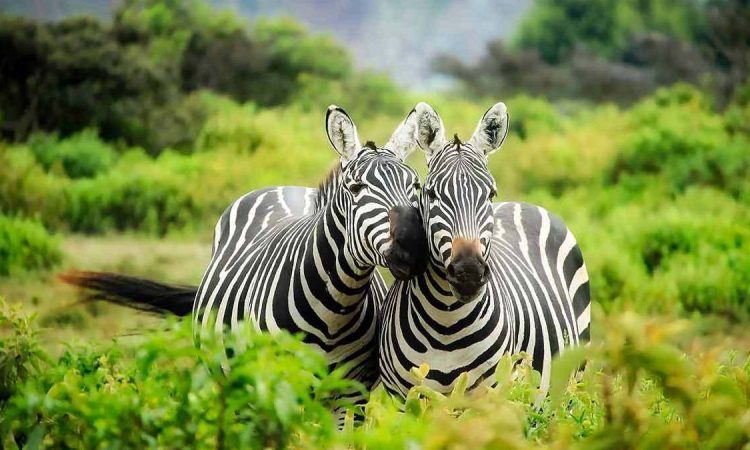
Lake Mburo is the only park in Uganda with eland, impala and klipspringer. It is also home to the largest population of zebra in Uganda estimated at about 5,000 and probably contains the highest concentration of leopard found anywhere in Uganda. Buffalo, waterbuck, topi and warthog are also very common.
Reedbuck and oribi can also be spotted in the open valleys. Hyena, genet, bush pigs and white tailed mongoose are often seen on night game drives.
7. Mgahinga Gorilla National Park
Mgahinga Gorilla National Park is part of the wider Virunga conservation region that also includes the volcanoes national park in Rwanda and the Virunga National Park in the Democratic Republic of Congo.
The park is located on the south-western corner of Uganda in the town of Kisoro.
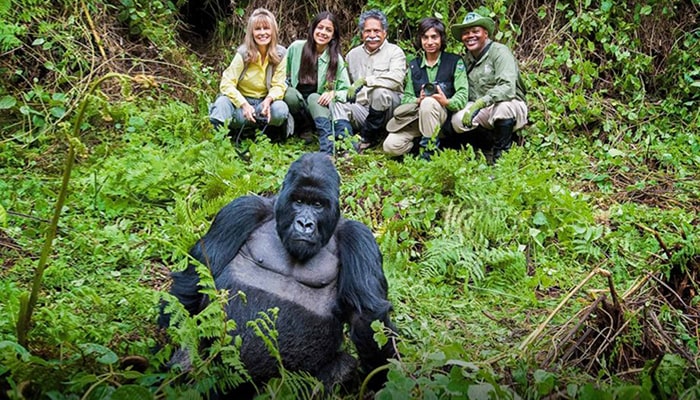
Mgahinga was upgraded from a game reserve into a full national park in 1991 mainly to protect the mountain gorillas that were in frequent conflicts with humans living within and outside the park. Mgahinga is the smallest national park in Uganda and covers an area of 34 square kilometers
The main attractions in the park are the mountain gorillas but Mgahinga National Park is also home to the endangered golden monkeys, Vervet monkeys, Spotted hyenas, Serval cats, Red tailed monkeys, Patas monkeys, Mangabeys, Leopards, Golden cats, Forest hogs, Elephants, Bushbucks, Bushbabies, Buffaloes, Blue monkeys,, Baboons, African porcupines, Black and white Colobus monkeys. The reptiles in the park include snakes, geckos and chameleons to mention but a few. We will discuss more about the birds shortly.
8. Kidepo Valley National Park
Kidepo Valley National Park lies in the rugged, semi arid valleys between Uganda’s borders with south Sudan in the north west and only 5km from the eastern border of Kenya, some 700km from Kampala. Gazetted as a national park in 1962, it has a profusion of big game and hosts over 77 mammal species.
Kidepo is Uganda’s most isolated national park, but the few who make the long journey north through the wild frontier region of Karamoja would agree that it is also the most magnificent, for Kidepo ranks among Africa’s finest wildernesses. From Apoka, in the heart of the park, a savannah landscape extends far beyond the gazetted area, towards horizons outlined by distant mountain ranges.
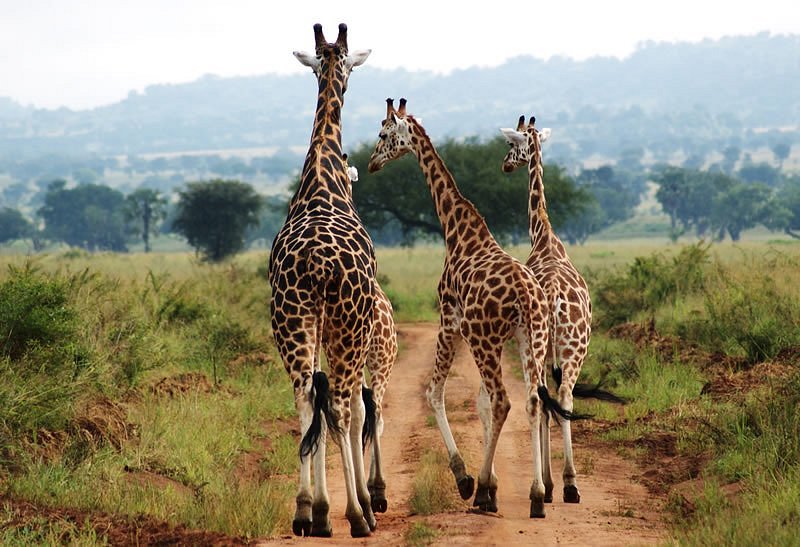
During the dry season, the only permanent water in the park is found in wetlands and remnant pools in the broad Narus Valley near Apoka. These seasonal oases, combined with the open, savannah terrain, make the Narus Valley the park’s prime game viewing location especially with its dense populations of Lion,Buffalos,Elephant and many similar angulates.
Kidepo’s elephant population has surged from around 200 in the mid 1990’s to between 650 and 1000 today. The African Buffalo population is now estimated at 10,000-15,000.The Rothschild Giraffe is very notable ,breeding more than 50 individuals from the bottleneck of the mid 1990’s population of three and supplemented several from translocation.
The bird checklist of over 476 species with the common Ostrich, secretary bird,northern carmine bee eater, little green bee eater, Abyssinian scimitar bill and many more colorful and visible species.

